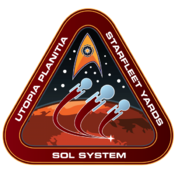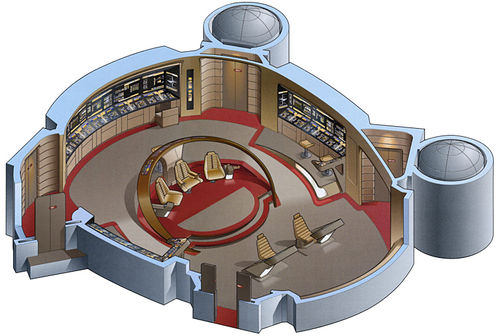Galaxy class/Design History & Achievements: Difference between revisions
(Created page with "{{Utopia Planitia}}__NOTOC__ {{Explorers}} {{Galaxy Menu}} ===Saucer Separation=== Building upon the concept of a true community in space pioneered by the {{c|Ambassador}}, th...") |
|||
| Line 6: | Line 6: | ||
===Class Modifications and Upgrades (2360s-2371)=== | ===Class Modifications and Upgrades (2360s-2371)=== | ||
The specifications for the ''Galaxy'' class during the 2360s were not substantially different from the "standard" configuration listed | The specifications for the ''Galaxy'' class during the 2360s were not substantially different from the "standard" configuration listed under the 2370s specifications in regards to propulsion and tactical performance. However, there were several key modifications and upgrades to the ''Galaxy'' class during this decade that were ultimately integrated into newer "uprated" vessels: | ||
* After the launch of USS ''Galaxy'', '''improved subspace field generators''' were introduced onto USS ''Yamato'' and USS ''Enterprise''-D. | * After the launch of USS ''Galaxy'', '''improved subspace field generators''' were introduced onto USS ''Yamato'' and USS ''Enterprise''-D. | ||
Revision as of 13:40, 23 December 2014
| Utopia Planitia Fleet Yards |
|---|
|
EXPLORERS
Saucer SeparationBuilding upon the concept of a true community in space pioneered by the Ambassador class, the Galaxy class specifications called for amenities not only for its officers and crew but their families and other civilians as well. In response to the safety concerns that accompanied such a large civilian contingent, designers at Utopia Planitia presented the Galaxy class as Starfleet's first starship with routine saucer separation capability. While previous starships had often included such a capability as an emergency procedure, the Galaxy class would be able to operate as two independent vehicles and then reunite without the need for a visit to a drydock or repair facility. Class Modifications and Upgrades (2360s-2371)The specifications for the Galaxy class during the 2360s were not substantially different from the "standard" configuration listed under the 2370s specifications in regards to propulsion and tactical performance. However, there were several key modifications and upgrades to the Galaxy class during this decade that were ultimately integrated into newer "uprated" vessels:
|
- Black-and-white ship illustrations by Tim Davies unless otherwise noted. Used with permission. All other images are copyright to their respective owners.
- Black-and-white ship illustrations by Tim Davies unless otherwise noted. Used with permission. All other images are copyright to their respective owners.
| REV SD 239112.23 |
|---|



